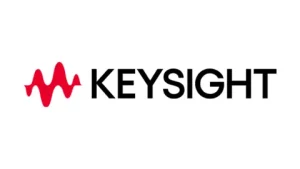By Onn Haran
The V2X concept of operation is simple. Each vehicle equipped with V2X transmits 10 times per second its position, speed, heading, and other parameters. Based on that, the future location of the vehicle can be calculated by other nearby vehicles, and in case of a potential accident, the driver is alerted ahead of time.
A key criterion of any vehicle safety system is the false alert rate. A false alert annoys the driver, who eventually ignores the alert even when it shouldn’t be ignored. Even worse is phantom braking based on a miscalculated risk.
A false alert can result from multiple reasons. Objects can be falsely detected, their kinematic properties can be falsely measured, and their movement trajectory can change. In the case of V2X, as opposed to other vehicular sensors, the first two reasons do not apply. A complex perception algorithm isn’t needed to classify objects and estimate their progress frame-by-frame. V2X performance isn’t impacted by lighting and weather conditions.
The last failure reason, movement trajectory change, impacts all vehicular sensors. Any prediction can change once a driver brakes or steers. The V2X update rate is limited to 10Hz, which is a bit lower than the state-of-the-art cameras or radars. But is that a problem?
To answer that, we need to focus on the accidents where V2X plays a significant role: those where the other vehicle isn’t visible until the very last moment. Often, queues are formed on the road, causing an emergency stop at best, or a rear-end accident at worst. V2X can detect an unexpected traffic jam long before it can be observed. Early awareness would allow the vehicle to slowly decelerate, decreasing the probability of hitting the car ahead and getting hit by the car behind. To provide a perspective, the braking distance on a dry road, with a 1 second decision delay, drops from 114m to 84m to 58m, when speed decreases from 120km/h to 100km/h to 80m/h respectively, using the AASTHO equation.[1] Since V2X can detect upcoming stopped traffic and give drivers an alert as much as 15 seconds ahead of time, in this use-case, V2X with a 10Hz update rate is highly effective. Even a 1Hz update rate would suffice.
The second critical accident where V2X plays a significant role is a side collision. Many roads are narrow, with visibility limited by a building or foliage. 99% of all drivers decelerate less than 2m/s2 in normal driving.[2] Meaning, when approaching an intersection at 50km/h, nearly all drivers will start to slow down at least 8 seconds before the stop line. If a vehicle is 4 seconds away from the intersection and doesn’t start braking, then it has no intention of stopping. Based on this fact, V2X can give surrounding drivers prior knowledge in such a situation even before the perpendicular vehicle is visible. The V2X alert will mitigate the risk by allowing the drivers substantial time to reduce the speed. Putting it into numbers: with 1 second reaction time, the stopping distance drops from 28 meters to 20 meters when the speed decreases from 50km/h to 40km/h. Also in this case, a 10Hz update rate, and even 5Hz, is sufficient to indicate the presence of a non-braking vehicle around the corner.
To sum up, V2X provides a unique ability to prevent accidents with vehicles that cannot be seen by the driver or any other vision-based sensor. In the case of V2X, update rate of 10Hz is more than enough to prevent even the most dangerous accidents.






